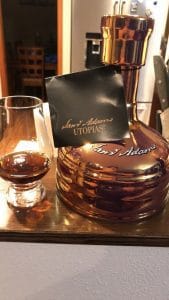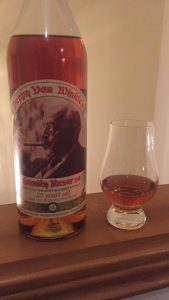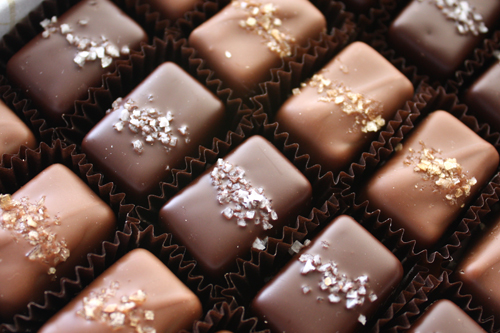To see more of how much your choices are limited at the supermarkets, check out our post Who makes your Supermarket Wine? (A Running List)
The Wine Industry Advisor posted their list of most read articles of 2017 with the number one article,from March, being on the launch of Liberation Distribution‘s web-based platform designed to connect small wineries with retail and restaurant clients.
LibDib aims to fill a huge gap in the traditional three-tier distribution network where the wholesale tier is dominated by a few large players who virtually ignore all but the largest portfolios. This is an exciting development for wine lovers to watch. When small family-owned wineries gain avenues to retail shelves and restaurant wine lists, it results in consumers getting real choices.
That’s not the case right now at all.
Don’t believe me? Let’s take a stroll to a local grocery store and look at the shelves.
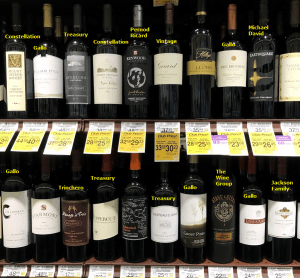
Here’s a snapshot of 20 Cabernet Sauvignons. That’s a lot of Cabs right? Well out of the 20, we have 5 of the wines being brands that belong (either whole or partially) to E. & J. Gallo. That’s 25% of the shelf right there. Of course that percentage could be higher if we include Gallo’s recent purchase of Orin Swift wines or add other popular and well known Cabernet Sauvignons from the Gallo brands of Bridlewood, Carnivor, Souverain, The Naked Grape and Vin Vault.
Let’s move over to Chardonnay where Jackson Family Estate holds considerable weight in the market place. Both the Kendall Jackson Vintner’s Reserve and La Crema Sonoma Coast regularly vie for top-selling Chardonnay in the United States but Jackson Family Estates can also control the shelf with Chardonnays from their Carmel Road, Freemark Abbey, Brewer-Clifton, Byron and Matanzas Creek brands.
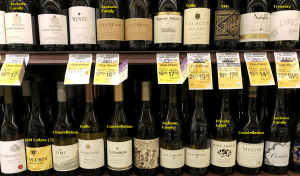
In recent years, the Jackson Family has been aggressively acquiring brands in Oregon and now includes such notable names as Penner-Ash, Zena Crown and Willakenzie in their portfolio.
If we head over to red blends, we see a lot of familiar names and many of them are under the umbrella of Constellation Brands. The past couple of years, Constellation has been spending mad money buying virtually everything from high-end Napa estates like Schrader Cellars, several of Charles Smith’s Washington labels to distilleries like High West and breweries like Ballast Point.
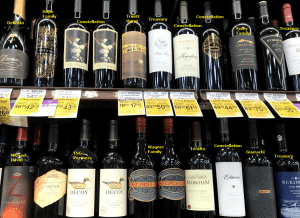
Constellation Brands has certainly been on a buying spree of late. It is becoming something of a parlor game to guess who they are going to swallow up next. For many observers, the betting money is on Constellation making a move to acquire Ste. Michelle Wine Estates.
Speaking of Ste Michelle Wine Estates…
A quick peak at the Syrah and Merlot sectionshows what a commanding presence they have in Washington State. Of the 17 skus featured on the shelf here, nearly 50% are made by this one company.
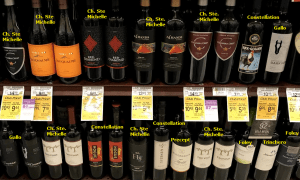
That doesn’t even include their other well known brands. Things like Seven Falls, Drumheller, Northstar, Spring Valley, Stimson, Tenet/Pundit, Col Solare as well as their original CSM label. It also doesn’t include some of their partnership projects and recent purchases of California wineries like Stag’s Leap Wine Cellars and Patz & Hall to go with their previous holdings of Conn Creek, Villa Mt. Eden, and Erath in Oregon.
Restaurants can have wine lists of 100+ wines made up of nothing but brands owned by Ste Michelle Wine Estates.
And this is not unusual in the world of wine. The consolidation of distributors and flurry of mergers and acquisitions of wineries by big corporations puts immense pressure on dwindling shelf space.
This results in making it virtually impossible for many small wineries to break through. So it’s not surprising that a start up like Liberation Distribution is capturing attention. It potentially could be a game changer for many family wineries.
It’s something worth watching and certainly worth raising a glass to toast the success of.


